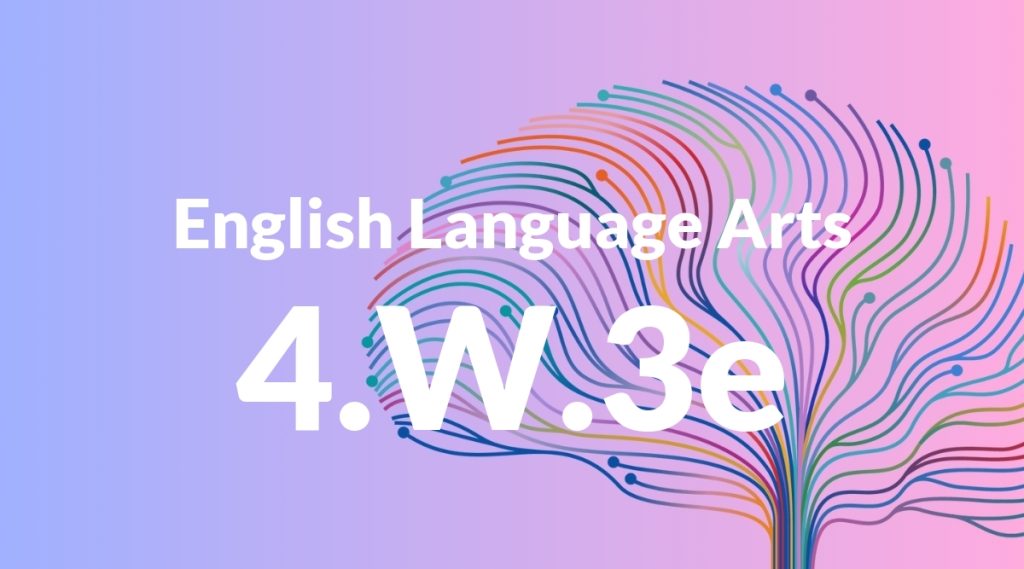Standard: 4.W.3e – Provide a conclusion that follows from the narrated experiences or events.
Grade level: Grade 4
Subject: English Language Arts
Domain: Writing
Teacher Overview
This standard focuses on helping students learn how to write effective conclusions that logically follow from the events or experiences they have narrated. It is important because it teaches students to bring their writing to a coherent and satisfying close, which is a crucial skill in both academic and real-world writing. Students should understand the basic structure of a narrative, including the beginning, middle, and end. They should also know how to identify the main events and details in a story.
After mastering this standard, students will be able to craft more sophisticated conclusions in their writing, which will enhance their ability to write coherent and compelling essays, reports, and stories.
Common Misconception 1
A common misconception is that any ending is acceptable, regardless of whether it logically follows the events of the story. This is incorrect because an effective conclusion should naturally stem from the narrative’s progression.
Intervention 1
To address this, teach students to review their narratives and ensure the conclusion logically follows from the preceding events. Use graphic organizers to map out the story’s progression.
Common Misconception 2
Another misconception is that a conclusion is just a summary of the story. This is incorrect because a conclusion should provide closure or a final thought, rather than merely restating what has already been said.
Intervention 2
Encourage students to think of the conclusion as a way to provide closure or a final thought, rather than just a summary. Use examples from well-known stories to illustrate this concept.
Prerequisite Knowledge
Students should understand the basic structure of a narrative, including the beginning, middle, and end. They should also know how to identify the main events and details in a story.
Subsequent Knowledge
After mastering this standard, students will be able to craft more sophisticated conclusions in their writing, which will enhance their ability to write coherent and compelling essays, reports, and stories.
Instructional Activities
- Use graphic organizers to plan out the beginning, middle, and end of a narrative.
- Analyze the conclusions of well-known stories to understand what makes them effective.
- Practice writing conclusions for different types of narratives.
- Peer review sessions where students give feedback on each other’s conclusions.
- Create a checklist for what makes a strong conclusion and use it to revise drafts.




